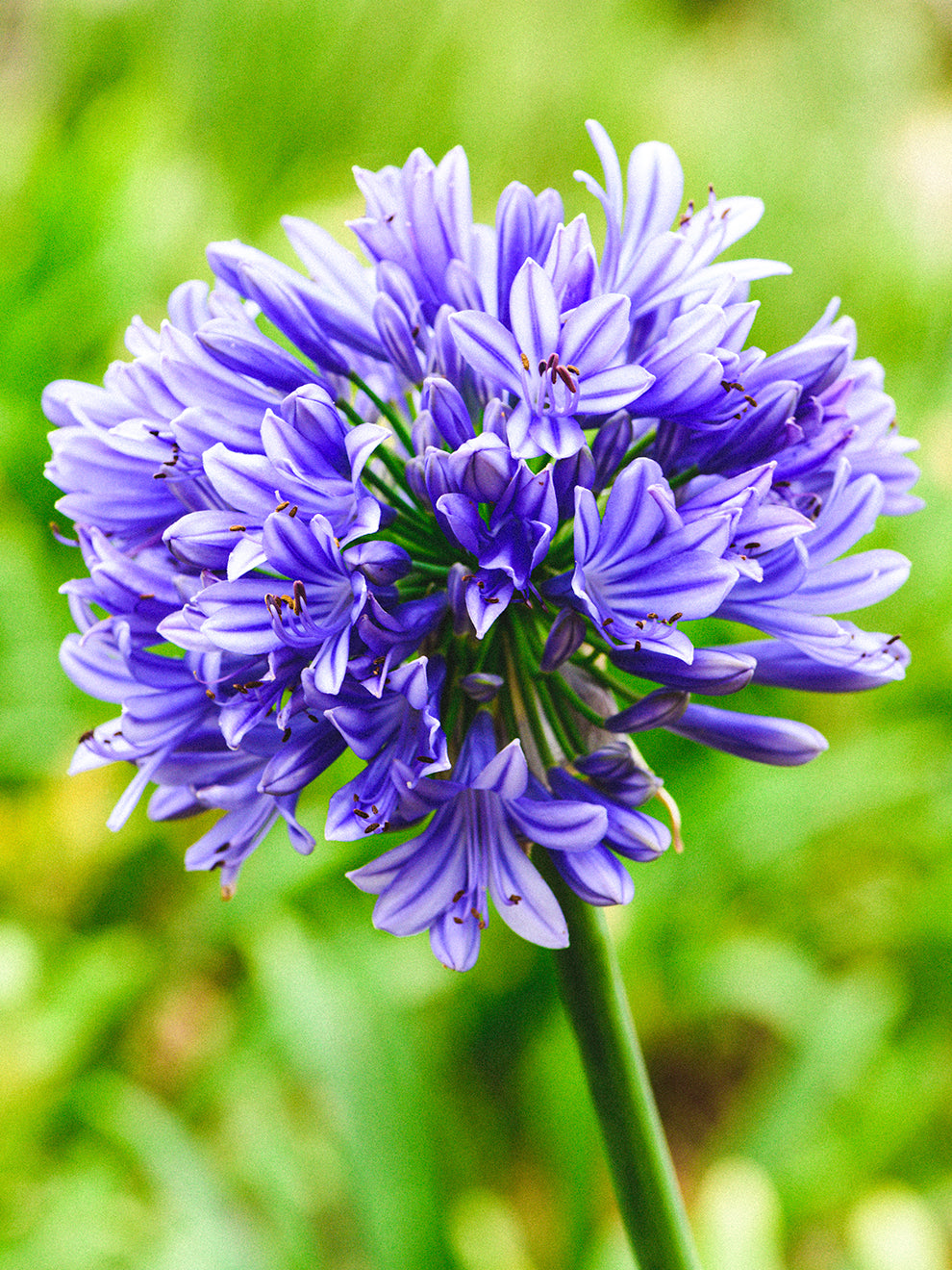Letting Loose the Secret to Effective Agapanthus Cultivation: Idea for a Flourishing Yard
In the realm of gardening, cultivating agapanthus efficiently calls for a strategic method that includes numerous elements of plant care. By understanding the nuances of agapanthus growing, one can develop an environment where these plants flourish and grow perfectly.
Planting Agapanthus: Best Practices
When planting Agapanthus, appropriate dirt preparation is essential for making certain effective development and growth of these attractive flowers. Agapanthus, commonly understood as Lily of the Nile or African lily, flourishes in well-draining dirt with a somewhat acidic to neutral pH degree - Agapanthus. Prior to growing, it is important to modify heavy clay soils with raw material such as compost or peat moss to boost water drainage and offer vital nutrients for the plants
To grow Agapanthus, select an area that obtains complete sunlight to partial shade, as this will certainly advertise healthy growth and abundant flowering. Dig an opening twice the diameter of the plant's root ball and put the Agapanthus at the same depth it was formerly expanding. Delicately backfill the opening with soil, weighing down strongly to remove any type of air pockets around the origins.
Water the newly grown Agapanthus completely and remain to keep the soil equally wet, particularly during the plant's active growing season. Agapanthus. Using a well balanced plant food once a month can better support the plant's growth and blooming. By adhering to these best practices for growing Agapanthus, you can develop a spectacular display screen of these fascinating flowers in your garden
Ideal Soil Conditions for Agapanthus
For optimum growth and flowering success of Agapanthus plants, ensuring the dirt conditions are optimal is important. Agapanthus prospers in well-draining soil with a somewhat acidic to neutral pH level ranging from 6.0 to 7.0. This kind of dirt permits ample water drain, avoiding waterlogging which can lead to root rot. To boost soil water drainage, take into consideration adding organic matter such as compost or peat moss when preparing the growing website. Additionally, Agapanthus chooses soil that is rich in nutrients, so incorporating a well balanced plant food throughout the growing period can advertise healthy development and vibrant flowers.

Watering and Fertilizing Tips
To ensure healthy growth and vivid blossoms, appropriate watering and fertilizing methods are essential for effective Agapanthus cultivation. Agapanthus plants benefit from normal watering, specifically during the expanding period.
When it concerns feeding Agapanthus, a well balanced fertilizer with equivalent components nitrogen, phosphorus, and potassium can be applied in the springtime to promote healthy and balanced growth and blooming. Slow-release plant foods are excellent for giving nutrients gradually over a prolonged duration. Avoid over-fertilizing, as this can cause too much vegetation growth at the expenditure of flowers.
Additionally, including raw material like garden compost right into the dirt can boost nutrient levels and boost soil framework, helping in the overall health and wellness of the Agapanthus plants. By following these watering and feeding suggestions, gardeners can guarantee their Agapanthus plants grow and generate spectacular display screens of flowers.
Trimming and Deadheading Strategies
Correct pruning and deadheading strategies play a vital role in keeping the health and appearances of Agapanthus plants, matching the essential methods of watering and fertilizing for successful farming. Pruning Agapanthus entails removing invested blossom heads, yellowing or dead fallen leaves, and overall shaping of the plant to promote far better growth. Deadheading, the procedure of getting rid of faded blossoms, not just boosts the plant's appearance but likewise urges more flowering.
When deadheading Agapanthus, it is advisable to clip off the blossom stem at the base using sharp, clean shears. This procedure reroutes the plant's energy from seed production back right into origin and foliage growth, advertising a much healthier and more robust plant. Routine deadheading can expand the blooming period of Agapanthus and protect against self-seeding, which can result in congestion.
In regards to trimming, Agapanthus generally gain from a light trim after blossoming to clean the plant and urge fresh growth. Cutting down the spent blossom stems and getting rid of any kind of dead or damaged foliage assists preserve the plant's vitality and total appearance. Nonetheless, it is important to stay clear of reducing right into the crown of the click this site plant, as this can weaken its health and wellness.

Protecting Agapanthus From Pests and Diseases
Carrying out effective insect and condition administration approaches is important to protecting the wellness and vigor of Agapanthus plants in farming. One common bug that affects Agapanthus is the Agapanthus borer, a caterpillar that passages into the plant, creating damage to the leaves and blossoms.
In addition to insects, Agapanthus are vulnerable to illness such as root rot and fungal fallen leave spots. By staying alert and dealing with parasite and illness concerns quickly, gardeners can aid their Agapanthus grow and flourish.

Conclusion
Finally, successful growing of agapanthus needs correct growing techniques, suitable dirt problems, ample watering and feeding, normal trimming and deadheading, and defense from parasites and conditions. By adhering to these methods and pointers, garden enthusiasts can make sure a growing garden filled this website with gorgeous agapanthus blooms. Agapanthus. Remember to maintain regular treatment and interest to detail to advertise the wellness and durability of these spectacular plants
When growing Agapanthus, proper dirt preparation is necessary for ensuring successful development and growth of these attractive blossoms.Water the newly grown Agapanthus thoroughly and proceed to maintain the soil evenly wet, particularly during the plant's energetic growing season.For ideal growth and blooming success of Agapanthus plants, making sure the soil conditions are excellent is crucial. When planting or transplanting Agapanthus, guarantee the soil is well-prepared to offer the required structure for the plants to establish themselves effectively. One common parasite that impacts Agapanthus is the Agapanthus other borer, a caterpillar that tunnels right into the plant, triggering damage to the fallen leaves and flowers.